People need calendars for planning, but finding one that suits personal style and space can be tough. Not everyone wants a full calendar. Some just need simple, clear month names to print and use for DIY projects, like custom planners or wall calendars. We gotta figure out a way to offer easy access to just the month names for printing, making it flexible for folks to create their own stuff.
We design printable names of months for easy learning and display. Each month comes in a unique font and color, making it fun and engaging for both kids and adults to use. These printables are perfect for calendars, classroom decoration, or helping young ones to learn the names and order of the months. Handy for quick reference or educational activities.
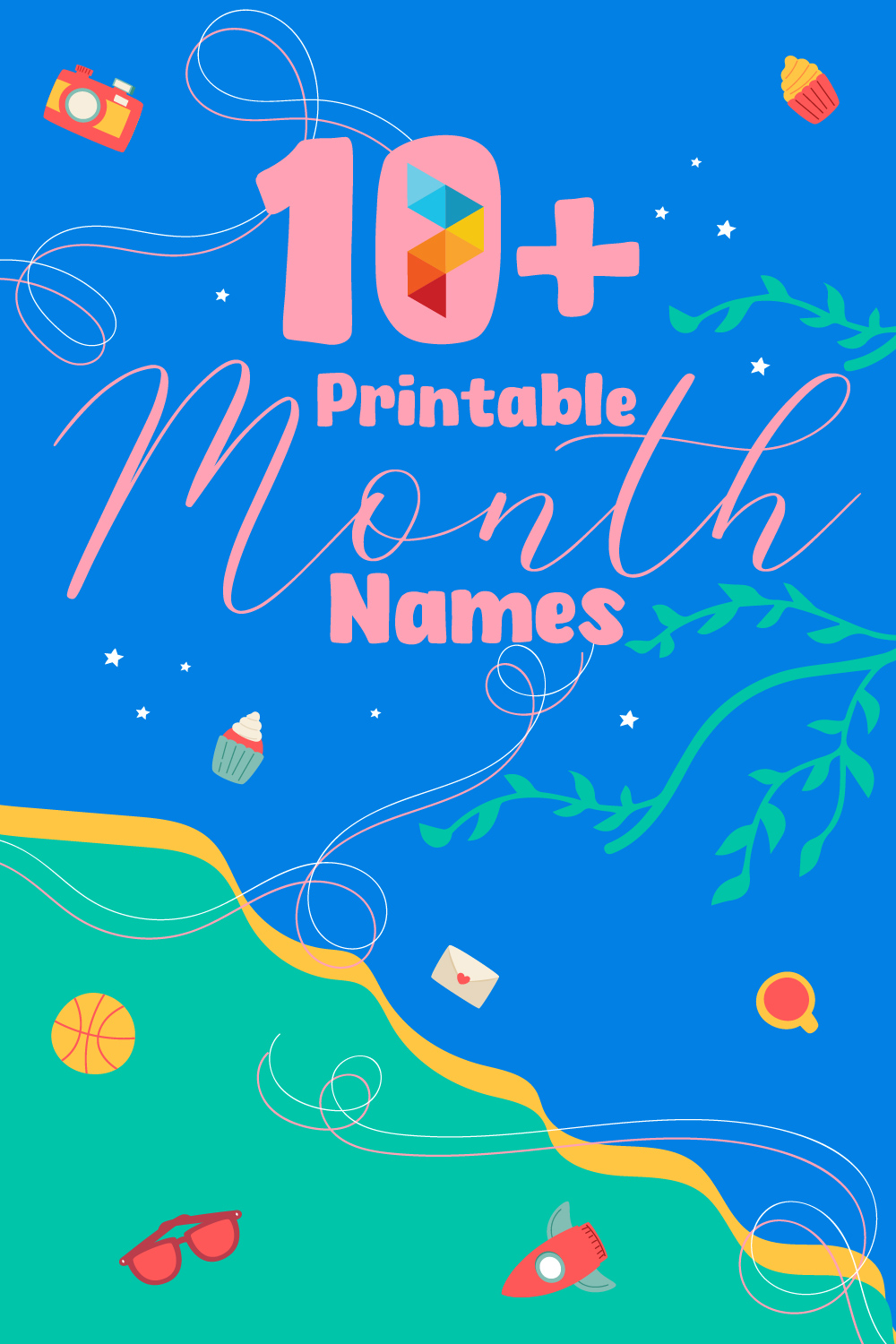
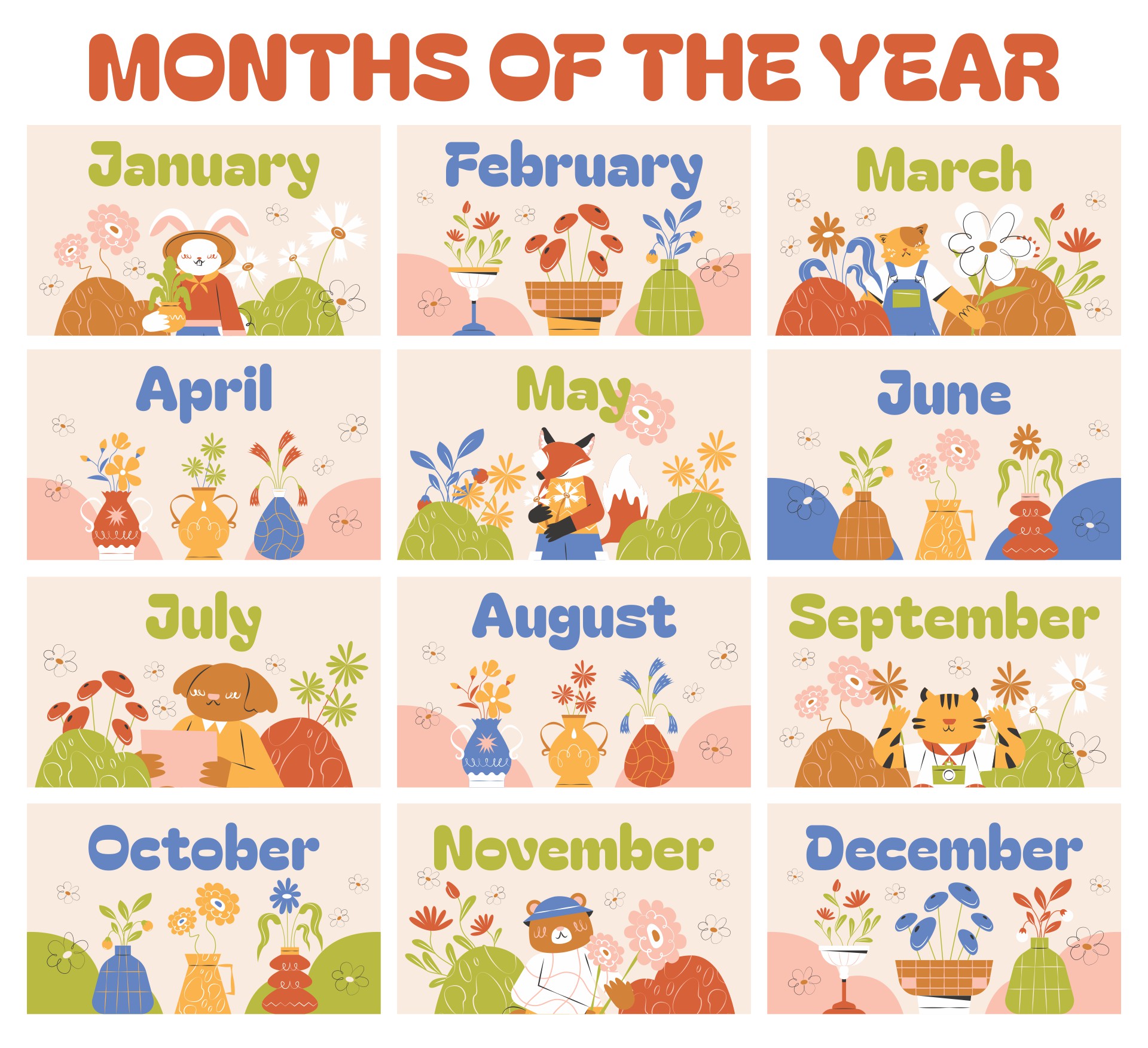
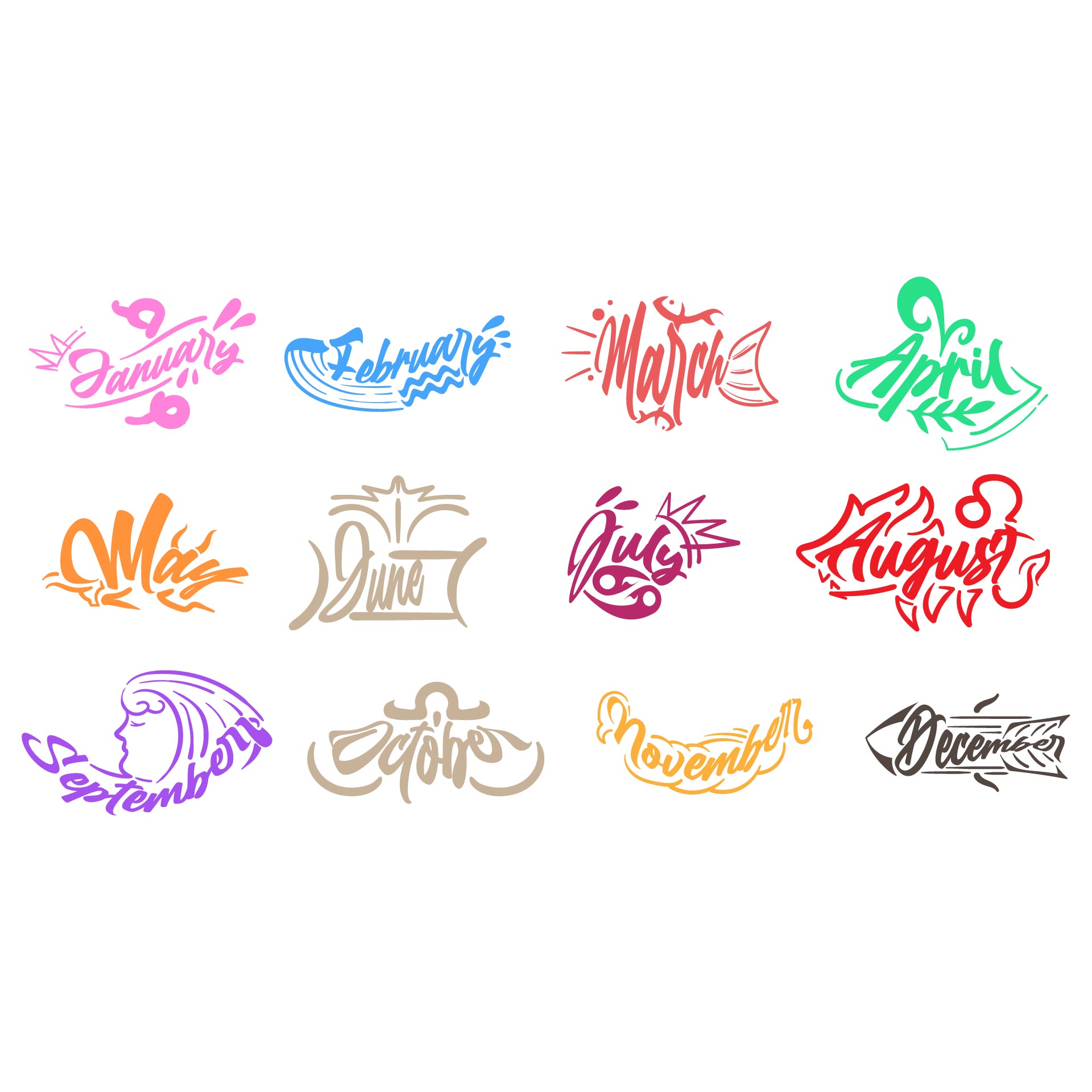
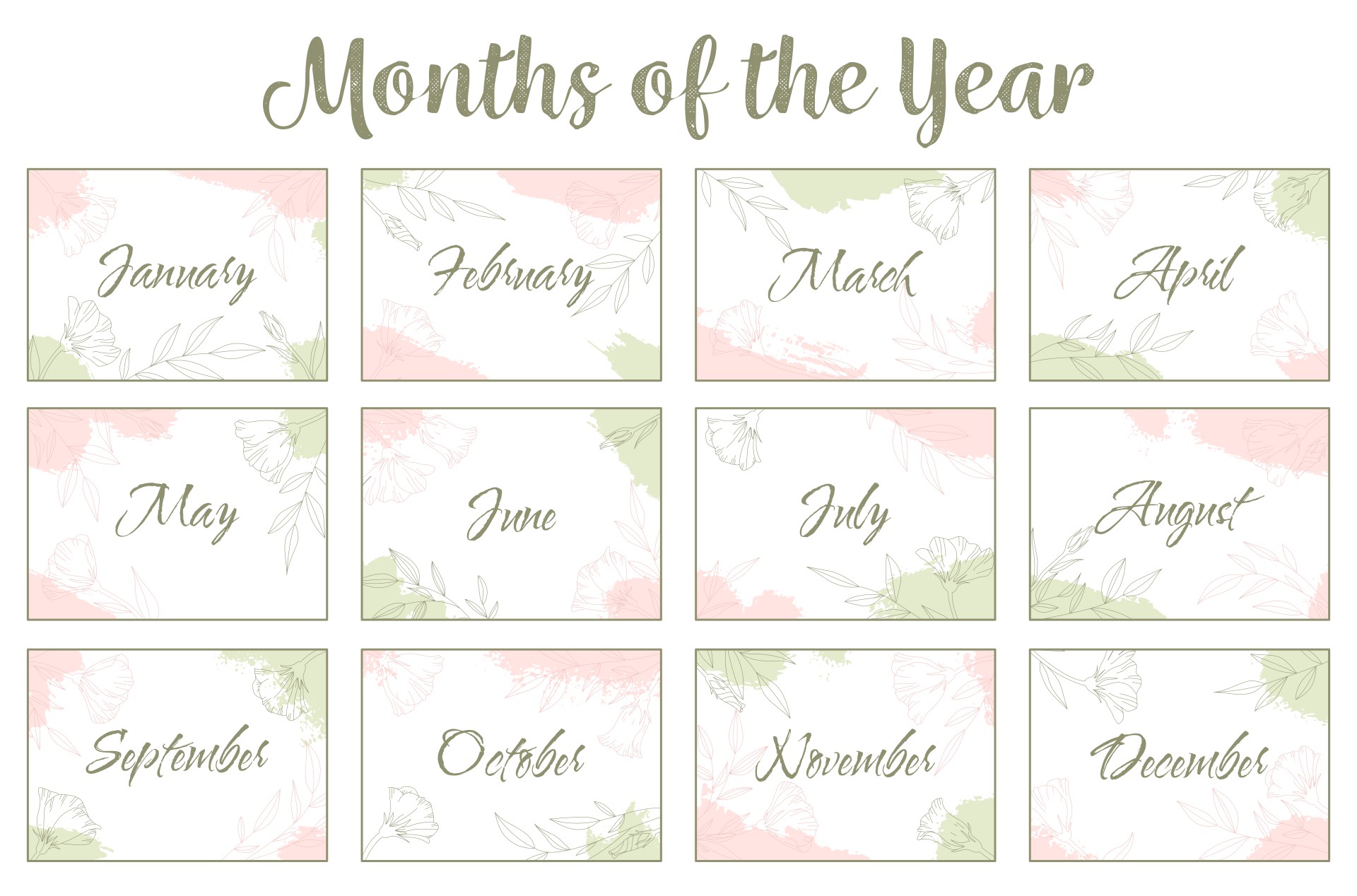
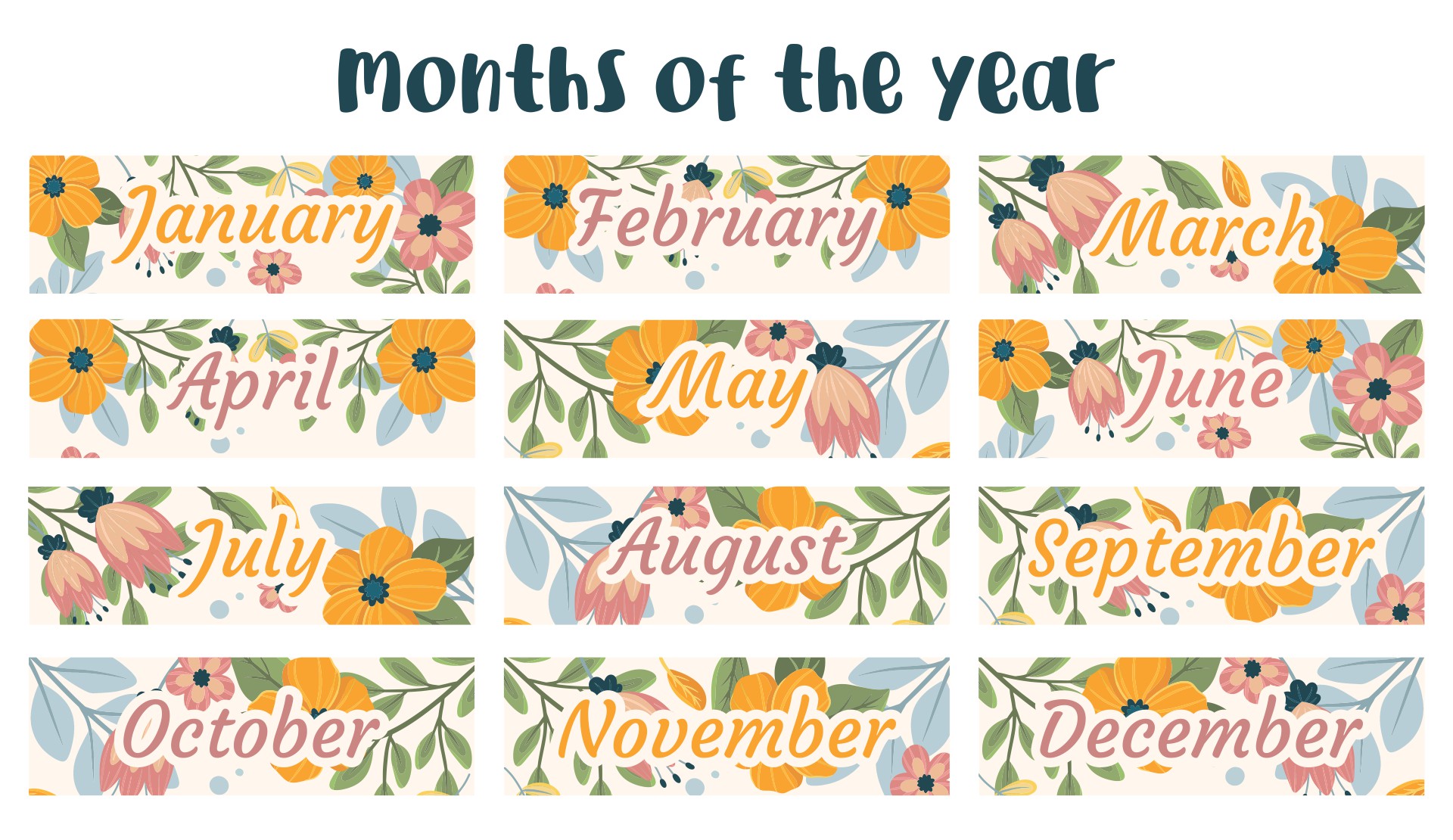
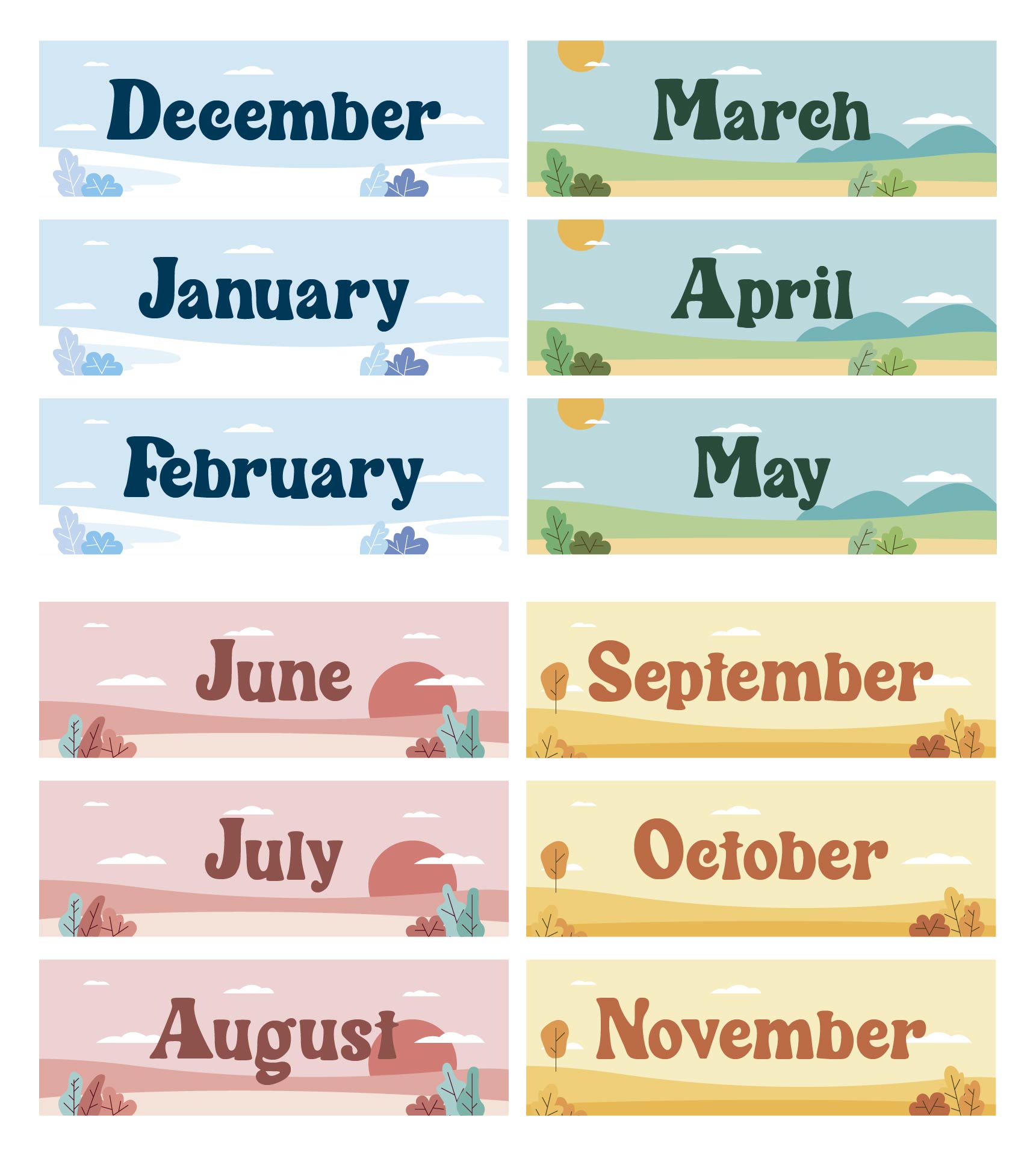
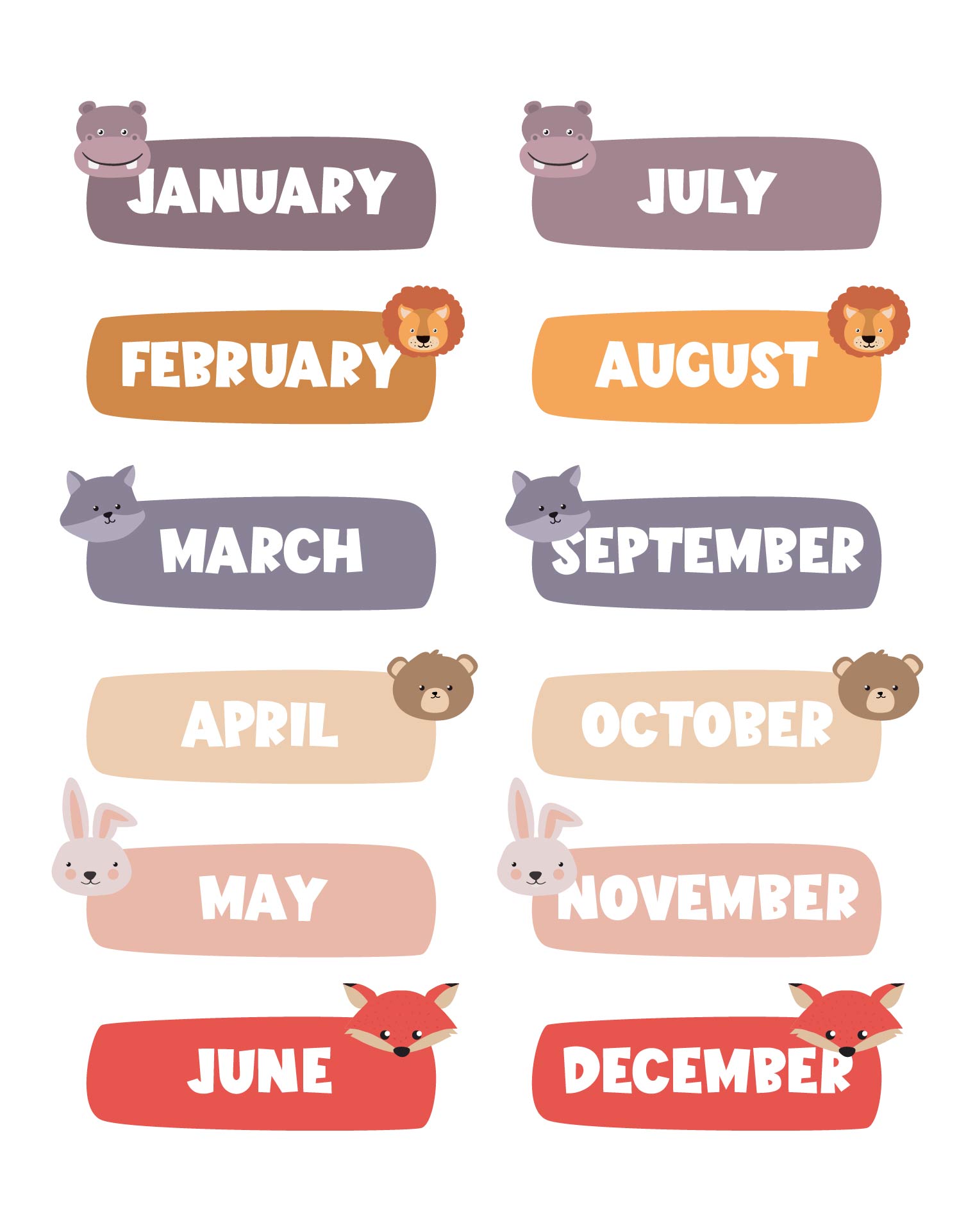
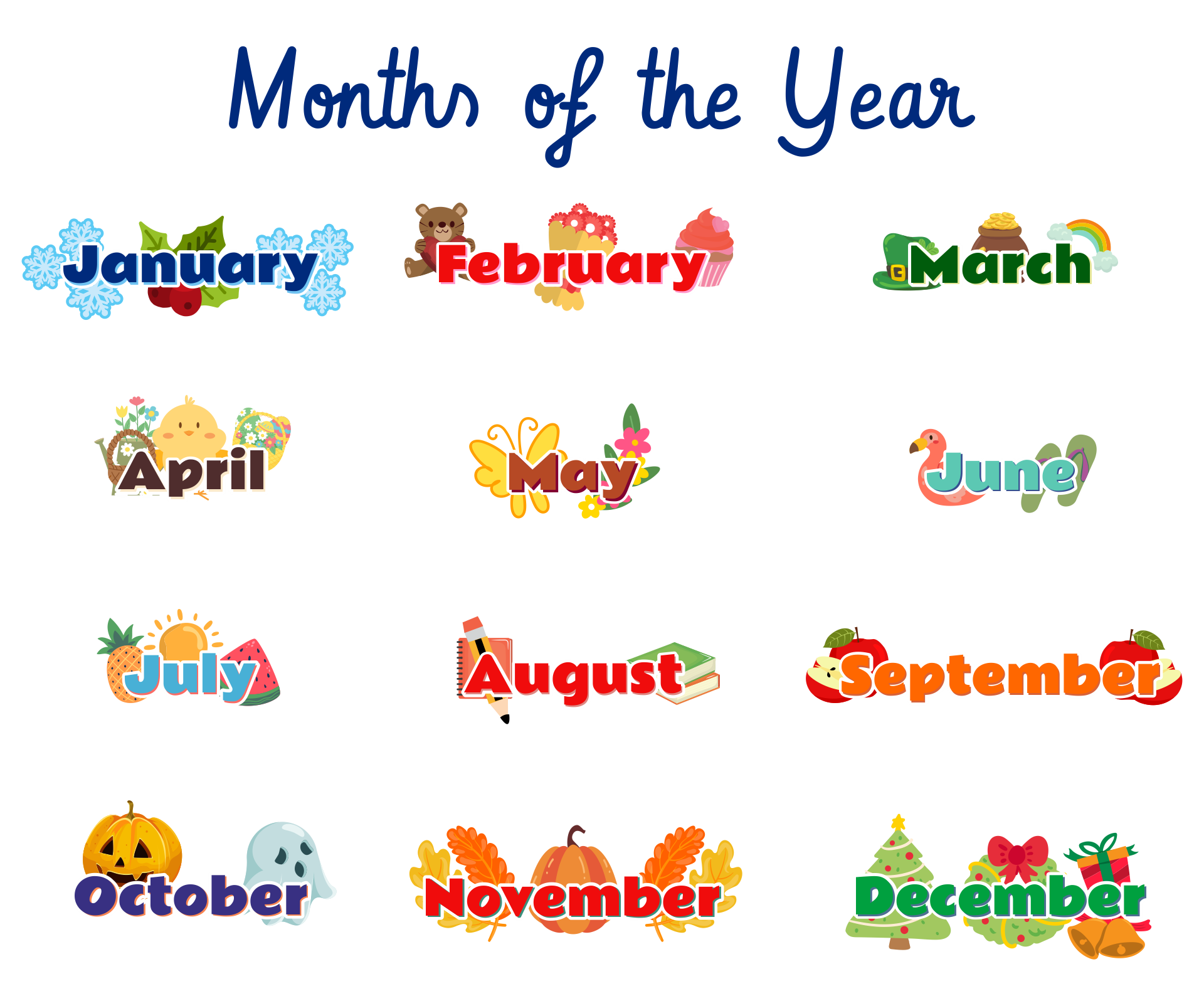

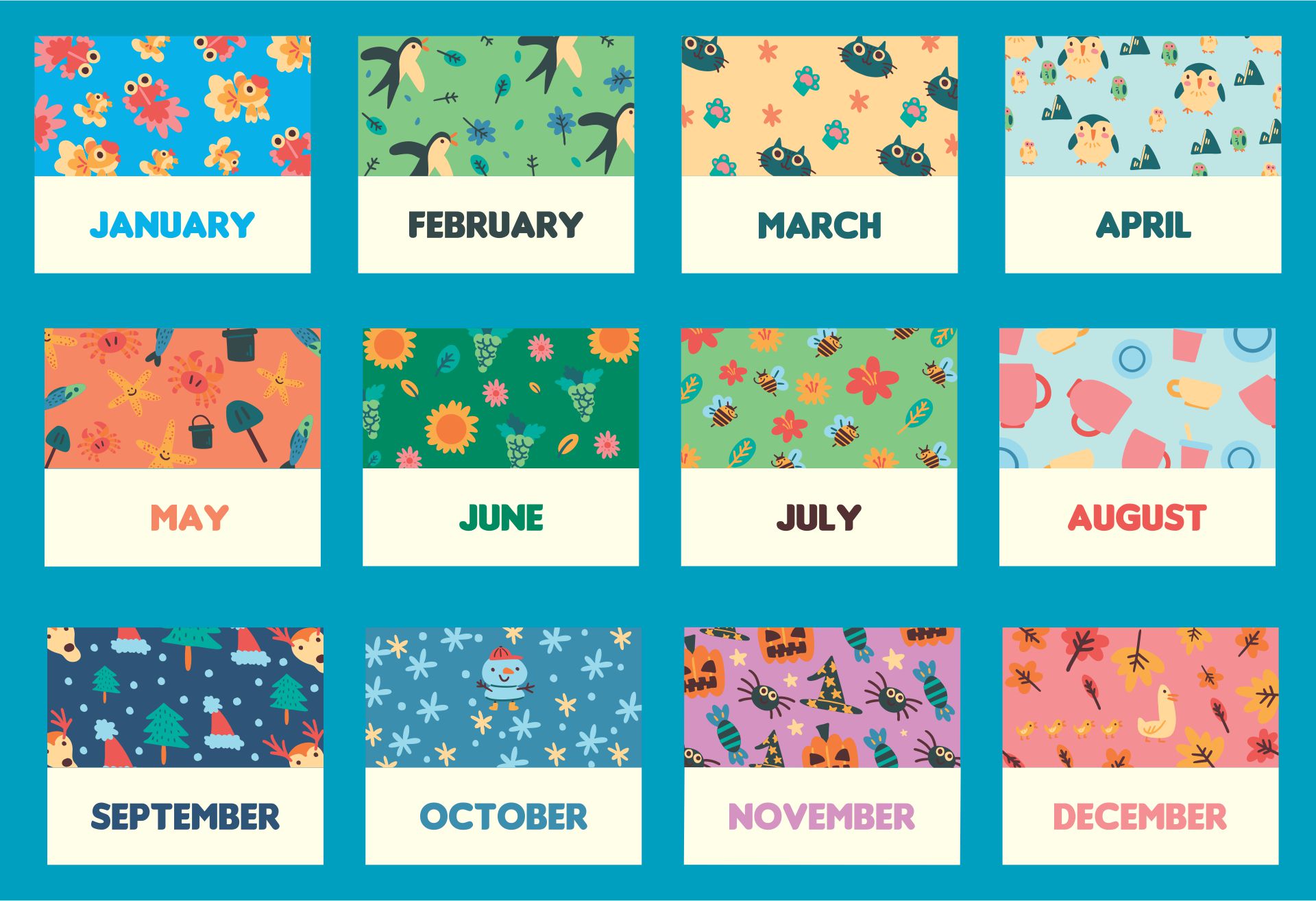
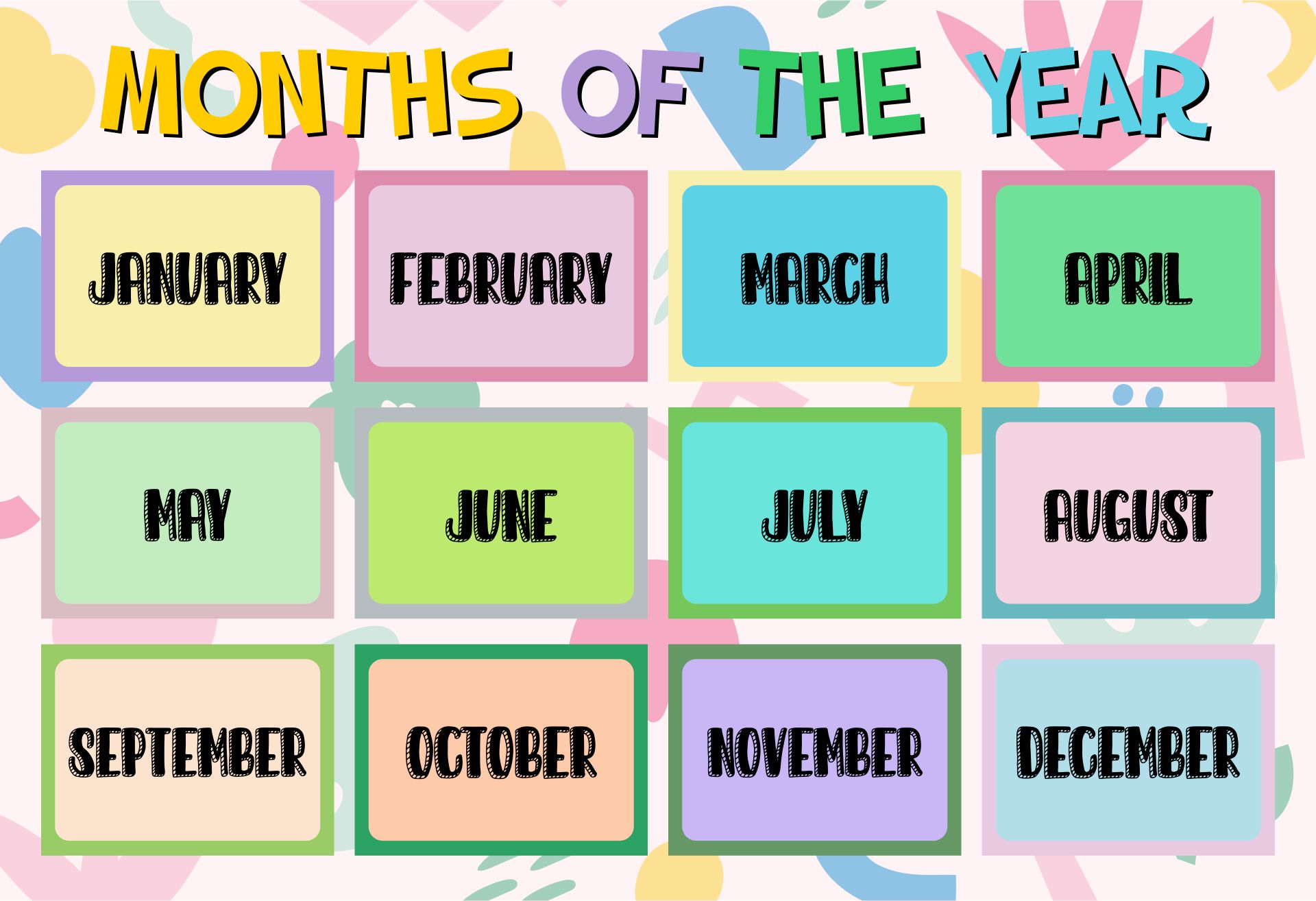
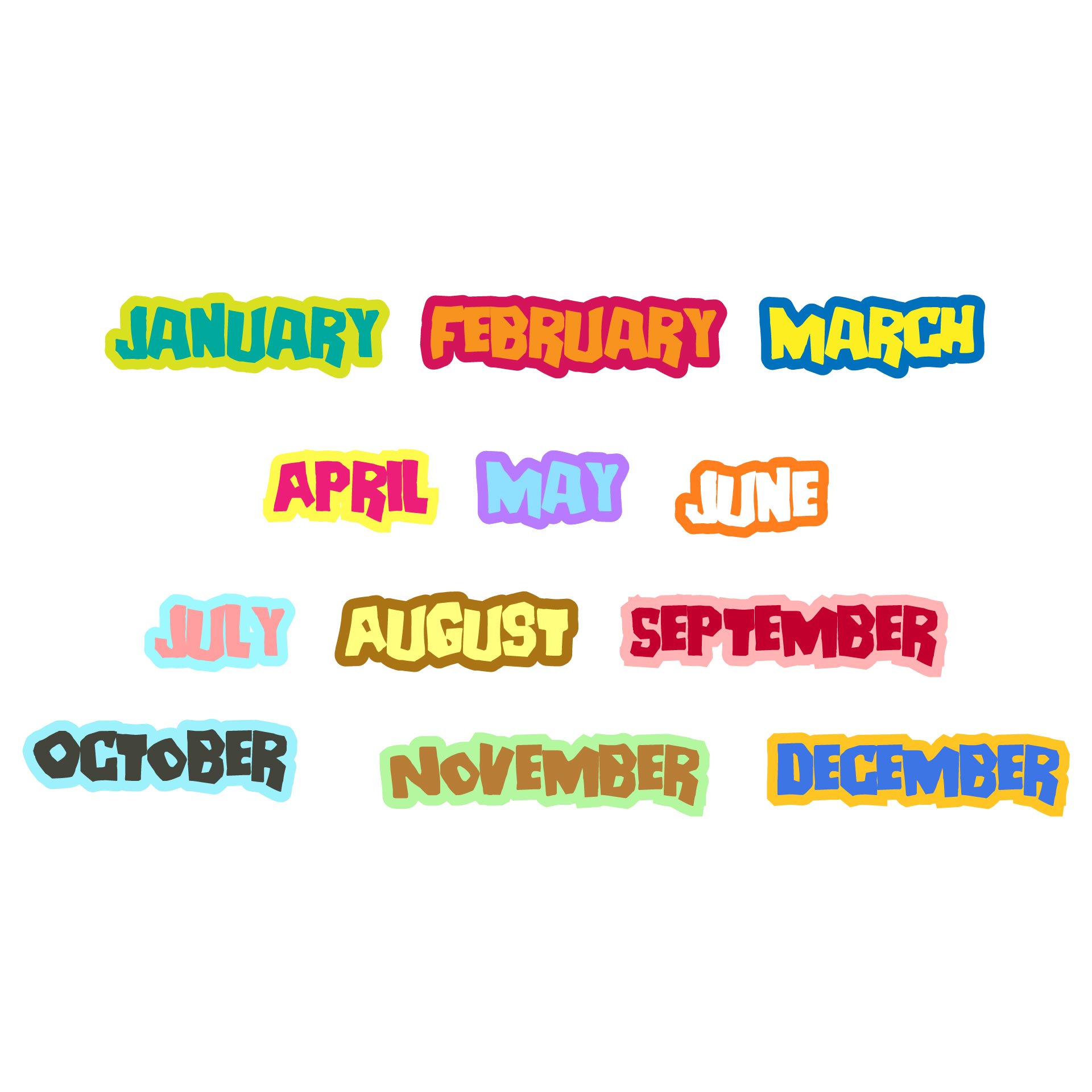
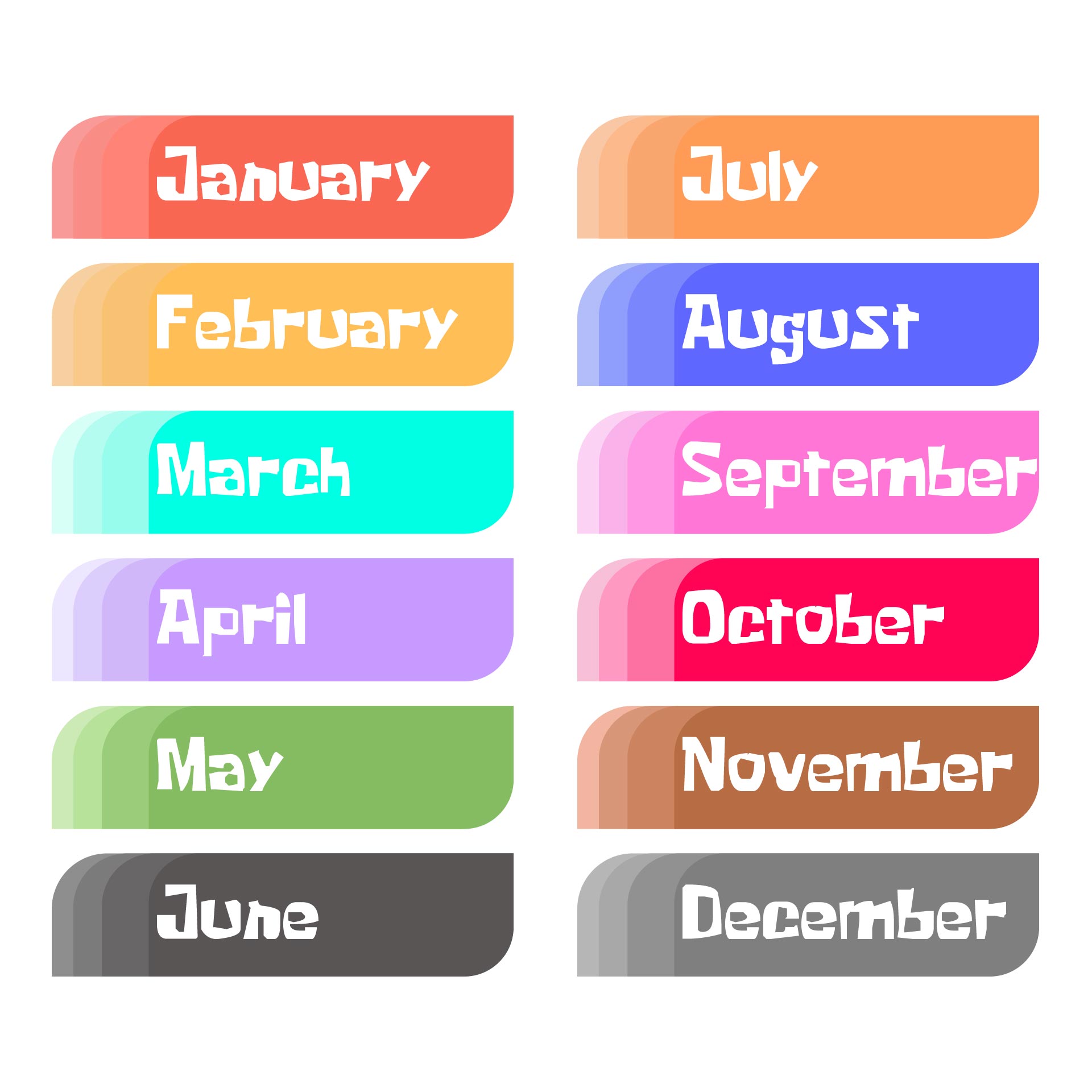
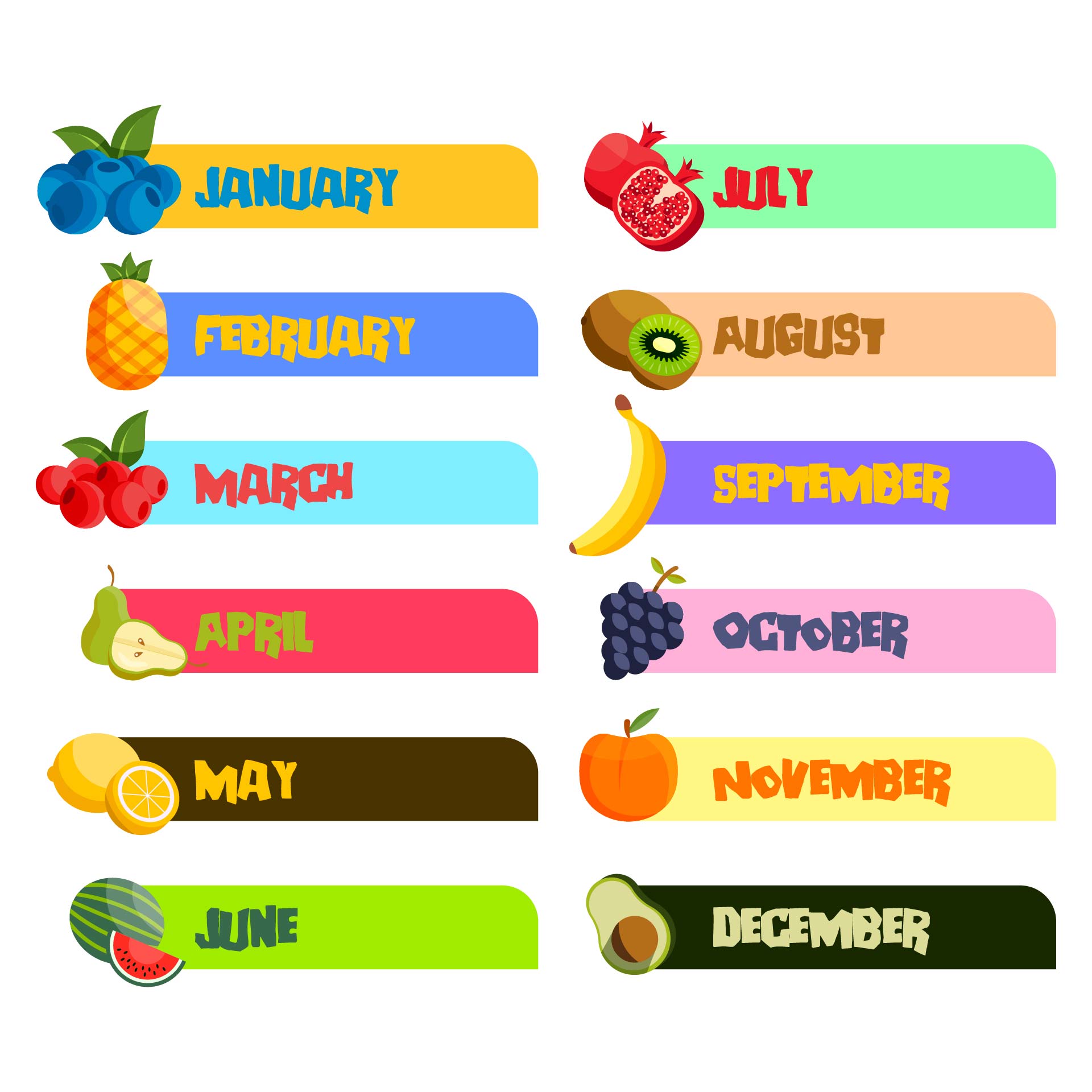
Learning the month names can be an exciting educational journey. Here's a suggested approach for teaching the months and some information on the origin of their names:
Introduce the Months. Start by introducing the concept of months and their importance in organizing the calendar year. Explain that there are 12 months in a year and that each month has its own unique name.
Sing a Song or Use Mnemonics. Utilize a catchy song or a mnemonic device to help learners remember the order of the months. For example, "Thirty days hath September, April, June, and November..."
Visual Aids. Display a printable calendar or printable cards with the names of the months arranged in their correct order. Use this visual aid as a reference point during the teaching process.
Discuss Origin of Month Names. Provide information about the origin of each month's name.
Names based on months are a popular trend for baby names, and they often hold symbolic meanings associated with the characteristics or events of that particular month. Here is a general overview of the meanings behind names inspired by each month:
January: Names associated with January often reflect new beginnings, fresh starts, and the concept of "first." They can symbolize ambition, determination, and resilience.
February: Names derived from February often represent love, romance, and friendship. They may also signify qualities like compassion, sensitivity, and harmony.
March: March-inspired names may evoke the arrival of spring, growth, and renewal. They can symbolize energy, vitality, and creativity.
April: Names associated with April often embody the blossoming of flowers, beauty, and grace. They may also represent innocence, purity, and resilience.
May: May-inspired names are often connected to the concept of abundance, fertility, and growth. They can symbolize strength, beauty, and warmth.
June: Names derived from June typically signify summer energy and symbolism, light, and joy. They may represent qualities such as happiness, love, and optimism.
July: July-inspired names often embody the heat of summer, passion, and adventure. They can symbolize independence, courage, and enthusiasm.
August: Names associated with August may represent strength, power, and wisdom. They can symbolize loyalty, leadership, and determination.
September: September-inspired names often evoke the arrival of autumn, balance, and stability. They may represent intelligence, practicality, and reliability.
October: Names derived from October typically symbolize the beauty of autumn, change, and transformation. They may represent mystery, creativity, and resilience.
November: November-inspired names often reflect the harvest season, gratitude, and reflection. They may symbolize wisdom, intuition, and inner strength.
December: Names associated with December typically embody the festive spirit, joy, and celebration. They may represent hope, generosity, and kindness.
It's important to note that the meanings of names can vary across different cultures and languages. Additionally, personal interpretations and associations with a particular month can also influence the significance of a name.
When choosing a name based on a month, consider the cultural context, personal connection, and the overall meaning and symbolism that resonate with you and your child.
Have something to tell us?
Recent Comments
This printable resource provides a convenient and free way to access month names. Perfect for creating organized calendars and teaching children about the passing of time. Thank you for making this available!
I really appreciate having access to the Free Printable Month Names resource. It's a helpful tool that allows me to organize my schedule and stay on top of important dates in a creative and efficient way.
Thank you for sharing this helpful and free resource for printable month names. It will definitely come in handy for organizing my calendars and projects.